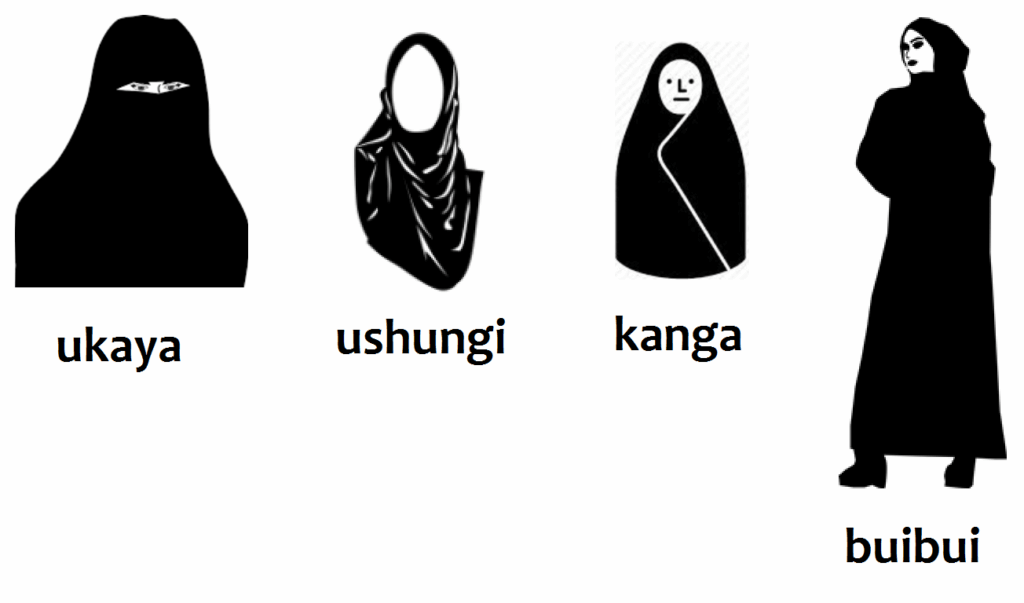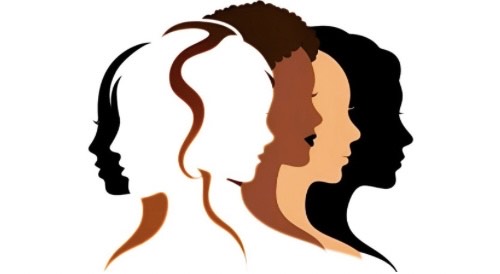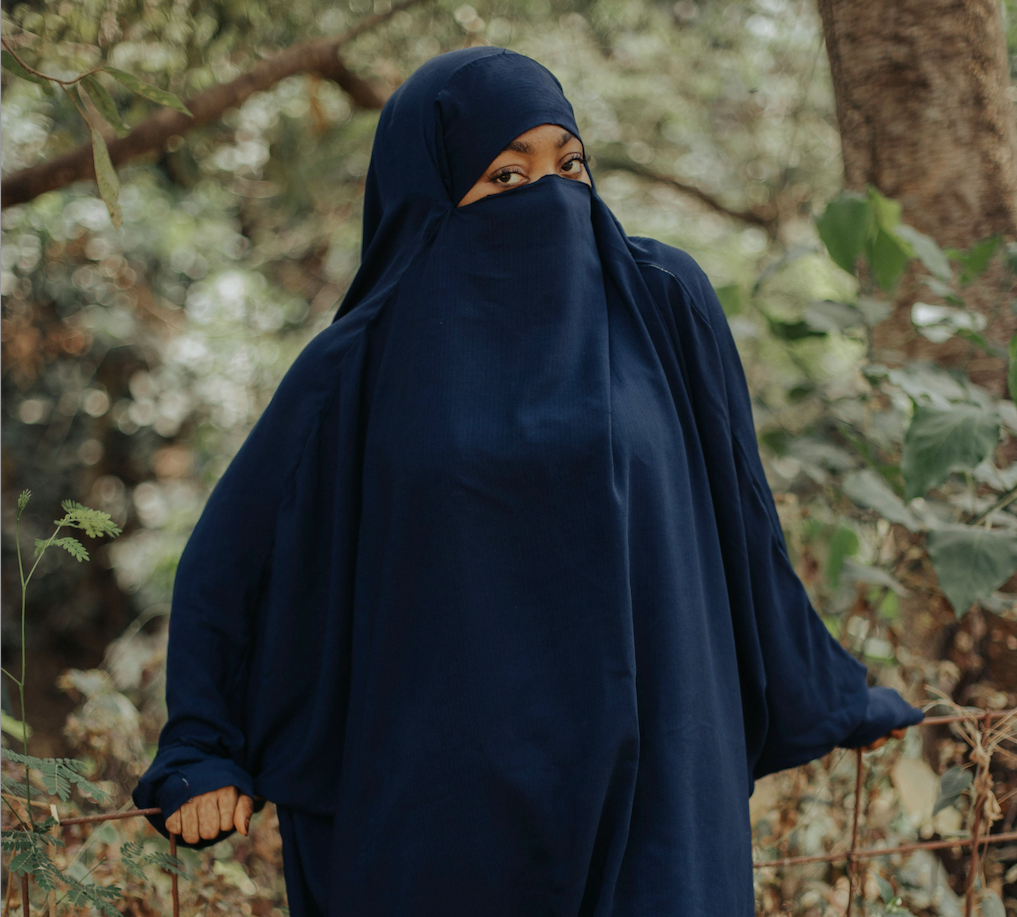In East Africa, a woman draped in a buibui, ukaya, or ushungi often moves through her day with ease. No stares. No questions. No performance. These garments are ordinary. They are cultural. They are home.
But carry those same garments across the ocean to a Western city, where difference is rarely neutral and everything changes.
A buibui becomes a symbol, A ukaya becomes a spectacle. An ushungi becomes a subject of curiosity.

And the woman inside them must now navigate the space between who she knows she is and what others project onto her.
The buibui is a long, black outer garment, worn mainly along the Swahili Coast from Somalia and Lamu down to Zanzibar and Mombasa. It’s rooted in Islamic practice but steeped in Swahili aesthetics: flowing, dignified, often embroidered or subtly adorned. It is not flashy, but it speaks. In its softness, there is structure. In its simplicity, there is pride.
In coastal East Africa, the buibui is a common sight worn to the market, to the mosque, to weddings, or while taking a child to school. But in the West, it becomes politicised. Misunderstood. Flattened into a stereotype of “oppression” or “extremism.” It’s read not as choice, but as silence.
And so, a woman who wears it in Europe or North America may feel hypervisible and invisible at once, seen, but not understood. She becomes a question mark, a token, a security threat, or a symbol of faith, few people have taken the time to learn about.
But what they don’t see is the woman’s own relationship to it. They don’t see the way her mother wore it when praying. Or the way she chooses it over jeans because it feels like softness in a hard world. Or how it protects not just her body, but her peace.
The ukaya, sometimes simply called a kitenge or wrapper, is a long piece of fabric wrapped around the body, traditionally worn as a skirt or dress by women in Swahili communities. It’s often bright, floral, wax-printed, and practical: a garment for cooking, dancing, resting, or working.
In villages and towns across Tanzania and Kenya, the ukaya is not a statement. It’s a rhythm. Women tie it at the waist while shelling peas or tuck it under their arms at the beach. It’s the garment of daily life.
In the West, however, the ukaya can feel too African. Too loud. Too rural. In a world where fashion is often curated for minimalism and Eurocentric aesthetics, wrapping oneself in a bold, printed cloth is often read as a spectacle, beautiful, but alien. “Colorful,” but not understood.
The woman who wears it here may find herself asked: “Is it a costume?” “Is it for an event?”
“Is it African Day?”
What’s missed is the ukaya’s connection to ease, ritual, and lineage. It’s not always political. Sometimes, it’s just comfort. Sometimes, it’s memory. Sometimes, it’s the only thing that makes a sterile apartment in a Western suburb feel like home.
The ushungi, a headwrap or scarf, carries its own legacy. In East Africa, it’s worn by Muslim women for modesty, but also by grandmothers who don’t cover for religious reasons. It’s functional, spiritual, and beautiful, a way to shield from the sun, mark respect, or signal mourning.
Wrapped neatly or loosely tied, it is a deeply intergenerational garment, something you watch your mother twist in the mirror, something you help your grandmother fold when she’s tired. An ushungi isn’t just a covering. It’s a conversation between women, passed from one set of hands to the next.
In Western settings, though, headscarves have long been targets of legislation, discrimination, and moral panic. Hijab bans in France. “Security concerns” in airports. Dress codes in classrooms. A simple cloth becomes a debate about assimilation.
The woman in the ushungi may feel the need to be exceptional, articulate, safe, as if her scarf requires her to be the best version of herself, to justify her presence. But she also knows this:
Wrapping her head is not an apology.
It’s an act of remembering.
And sometimes, resistance.
To wear these garments in the diaspora is to walk with both softness and sharpness, because they do more than dress the body. They reflect identity, history, defiance, and tenderness. But they also invite the gaze.
A gaze that is not always kind.A gaze that asks questions without words. A gaze that makes some women hesitate or stop wearing them altogether.
But for many, the answer is not to shed these garments to be accepted, but to reframe what they mean in a new context.
To wear a buibui in a place that fears Islam is to say: I will not hide my faith. To wear a ukaya in a city of trench coats and muted palettes is to say: I will not dim my culture for your comfort.
To tie an ushungi in a world that tries to erase you is to say: I know where I come from and I carry it with me.
We’re often told that clothes are just surface, just fabric, just fashion. But in the hands of Black and East African women, garments like the buibui, ukaya, and ushungi become something else entirely. Not just worn, but inherited. Not just seen, but felt.
They carry the weight of stories we were never taught in school. They carry the rhythm of hands that folded them with care before dawn. They carry grief, faith, tenderness, and fire.
And when we wear them in places where they’re misunderstood or worse, feared, we aren’t just getting dressed. We’re doing something braver than it looks. We are honouring women who didn’t have to explain themselves to anyone. We are speaking fluently in a language the West still doesn’t know how to read. We are asking for no permission and offering no translation. Because of wearing your culture when the world tells you to hide it. That is not just fashion. That is an answer. That is survival stitched in satin. That is presence, refusal, and power wrapped in cloth.
Read more fashion stories here.


